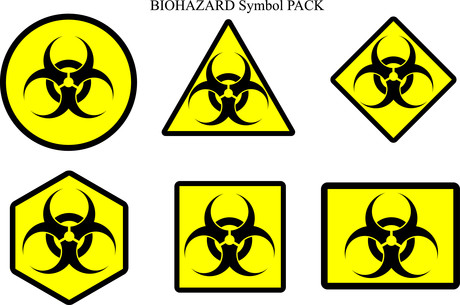When something 'sterile' is not

Central to good surgical practice and health care more broadly are the principles of asepsis: ensuring the absence of bacteria, viruses and other microorganisms, and of cleaning, disinfecting and sterilising to achieve asepsis for high-quality and safe care.
To deliver such health care, professionals undertake a range of practices that typically involve the use of infection control products, the quality of which is fundamental to patient outcomes in clinical care.
A recent event here in Australia highlighted how and why, when colleagues at the Gold Coast University Hospital and the Canberra Hospital experienced the consequences of a product failing to meet sterility requirements.
Contaminated sterile gel
Published in the American Journal of Infection Control, a paper I co-authored reported on the outbreak of bacteraemia and infection in 11 patients, predominately in intensive care units, caused by contaminated sterile ultrasound gel used in central line insertion and sterile procedures within four hospitals across Australia.
We first identified the organism Burkholderia cenocepacia in the blood culture of a patient from the intensive care unit (ICU) at the Gold Coast University Hospital in late March 2017.
In a matter of weeks other cases were identified. In early May, after comprehensive investigative work, the outbreak investigation team identified the point source as contaminated sterile gel packaged in sachets for use within the sterile ultrasound probe cover, precipitating a global safety advisory alert and recall.
In total, 11 patient isolates of Burkholderia cenocepacia with identical MLST sequence typing were identified within four hospitals across Australia. The contaminated gel sachets had been sourced internationally and distributed nationally.
Fortunately, in this instance, my colleagues and I across Australia were able arrest this national, potentially international, point-source outbreak quickly. This required a rapid, integrated and coordinated response across Australia working with key agencies such as the TGA.
An uncommon occurrence
While outbreaks of Burkholderia cenocepacia are not uncommon, those that do occur are typically associated with contamination of non-sterile solutions and products, often from deep environmental contamination. To discover that the point source was sterile, or what should have been sterile, ultrasound gel was something of a surprise. There was clearly a breakdown in the manufacturer’s process. And yet it serves as a salient reminder of the importance of asepsis, and of cleaning, disinfection and sterilisation for high-quality and safe care.
In this instance, the contamination was associated with bacteraemia, which is a serious and life-threatening condition. While it is difficult to determine the full extent of the result of this outbreak, the patients that were identified in this study recovered.
Healthcare professionals rely heavily on the quality of products they use to achieve good patient clinical outcomes. Put simply, clean products enable good, clean outcomes. Unclean or dirty products lead to bad, sometimes catastrophic outcomes.
Moreover, it demonstrates how important quality therapeutic goods are to achieving safe outcomes, and how on occasions all that is sterile is in fact not.

Reference
1. Shaban RZ, Maloney S, Gerrard J, Collignon P, Macbeth D, Cruickshank M, Hume A, Jennison A, Graham R, Bergh H, Wilson H, Derrington P. (2017). ‘Outbreak of healthcare-associated Burkholderia cenocepacia bacteraemia and infection attributed to contaminated ‘sterile’ gel used for central line insertion under ultrasound guidance and other procedures’. American Journal of Infection Control, 45, 954-8. DOI: http://dx.doi.org/10.1016/j.ajic.2017.06.025.
All metropolitan public hospitals miss out on green light
AMA's hospital logjam finder uses a traffic light system to indicate care within the...
Brain and kidney injury treatment after cardiac surgery
A multi-site study to test a treatment that may reduce brain and kidney injury after cardiac...
Domestic violence education: its place in pharmacy
Interviews with pharmacy practitioner educators have identified challenges and opportunities...









